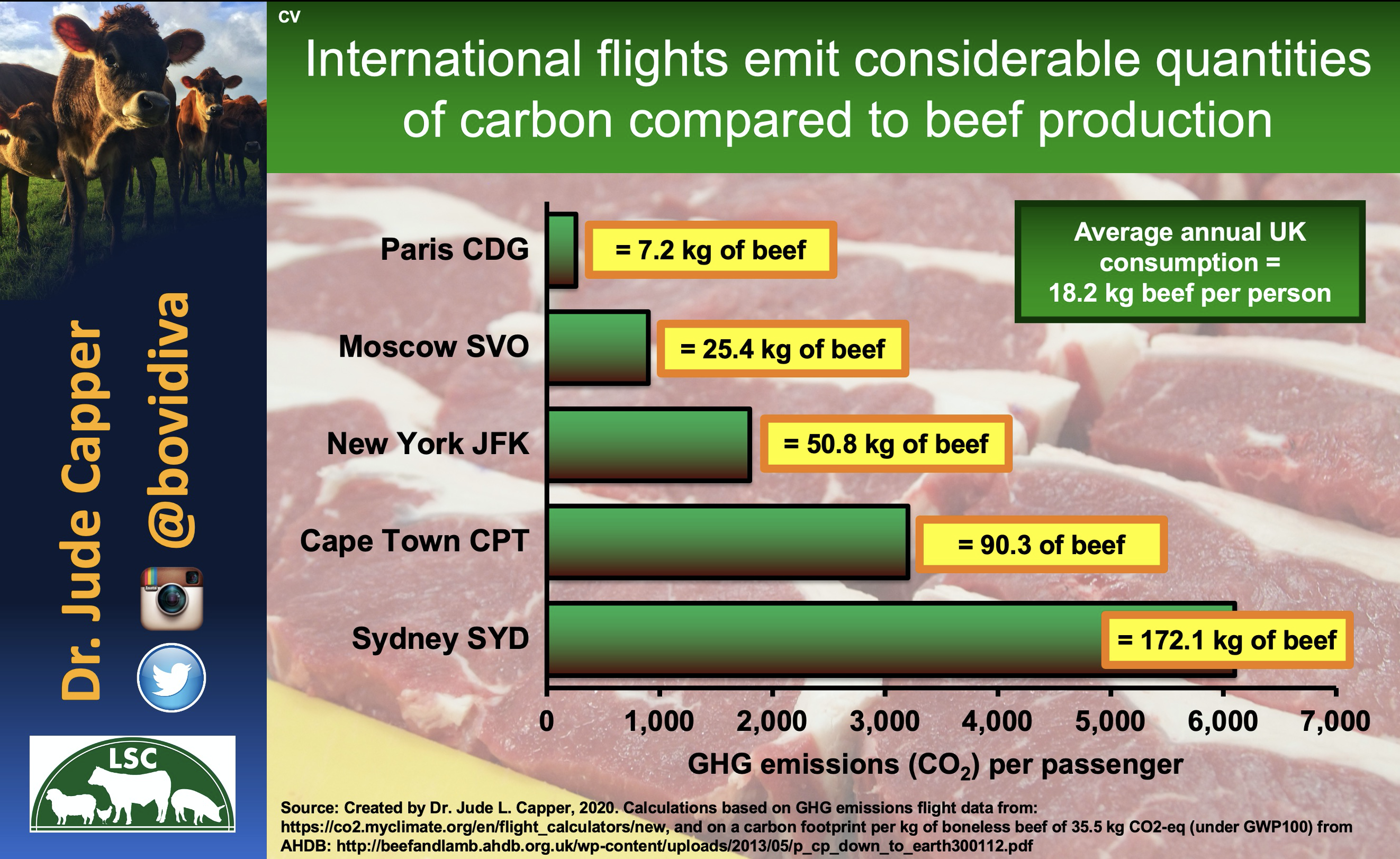
There has been considerable publicity devoted to the announcement that the University of Oxford Student Union Council have voted to approve an on-campus beef and lamb ban, citing a desire to reduce greenhouse gas emissions.
The greenhouse gas emissions associated with beef production comprise methane, nitrous oxide and carbon dioxide, with methane accounting for ~60-80% of the total, depending on the production system. Ironically, climate researchers at the University of Oxford (who presumably don’t sit on the Student Union Council) have reported that atmospheric methane breaks down over ~20 years, unlike carbon dioxide from fossil fuel combustion (e.g. aviation fuel) which continues to accumulate over time.
I grew up in Oxford and have always loved the diversity added to the city residents by the truly global university community of students, researchers and staff. However, it’s worth thinking about the carbon emissions of all the international flights that are therefore associated with the university (see infographic above).
To put flights into context:
- The carbon emissions associated with a return flight to Paris = 4.8 months of beef consumption* per passenger.
- The carbon emissions associated with a return flight to JFK = 2.8 years of beef consumption* per passenger.
- The carbon emissions associated with a return flight to Sydney = 9.5 years of beef consumption* per passenger.
We should all take strides to reduce our greenhouse gas emissions wherever possible – surely we can only assume that banning air travel will be next on the Student Union Council agenda?
It’s worth noting that this vote doesn’t actually have any legislative power, as each college within the University runs its own catering and therefore makes independent decisions as to food sourcing. Furthermore, a vote by the Student Council is a vote by a very small proportion of students on the council, rather than the 22,000 students across the entire University. It therefore seems unlikely that the ban would be mandated without significant student revolt, but given how many kebab and burger vans line the streets of Oxford after 9pm, I imagine the proprietors are looking forwards to a huge increase in demand if it is ever enforced.
*at an average UK consumption of 18.2 kg beef per capita


 This week I was asked to respond to an
This week I was asked to respond to an  Many of those who are protesting are vegetarian (as opposed to vegan), thus still consume milk, eggs, honey and other non-meat animal products. Given that
Many of those who are protesting are vegetarian (as opposed to vegan), thus still consume milk, eggs, honey and other non-meat animal products. Given that  As I have mentioned in previous blog posts, myriad everyday products contain by-products from cattle. Given the current outcry, once can only assume that those who
As I have mentioned in previous blog posts, myriad everyday products contain by-products from cattle. Given the current outcry, once can only assume that those who  In the Guardian this week,
In the Guardian this week,  For those of us in the UK, mentioning Danish livestock production almost inevitably leads to thoughts of Danish bacon (be still my beating heart) – a considerable proportion of their
For those of us in the UK, mentioning Danish livestock production almost inevitably leads to thoughts of Danish bacon (be still my beating heart) – a considerable proportion of their 
 It is equally interesting, inevitable and lamentable to see that
It is equally interesting, inevitable and lamentable to see that 
